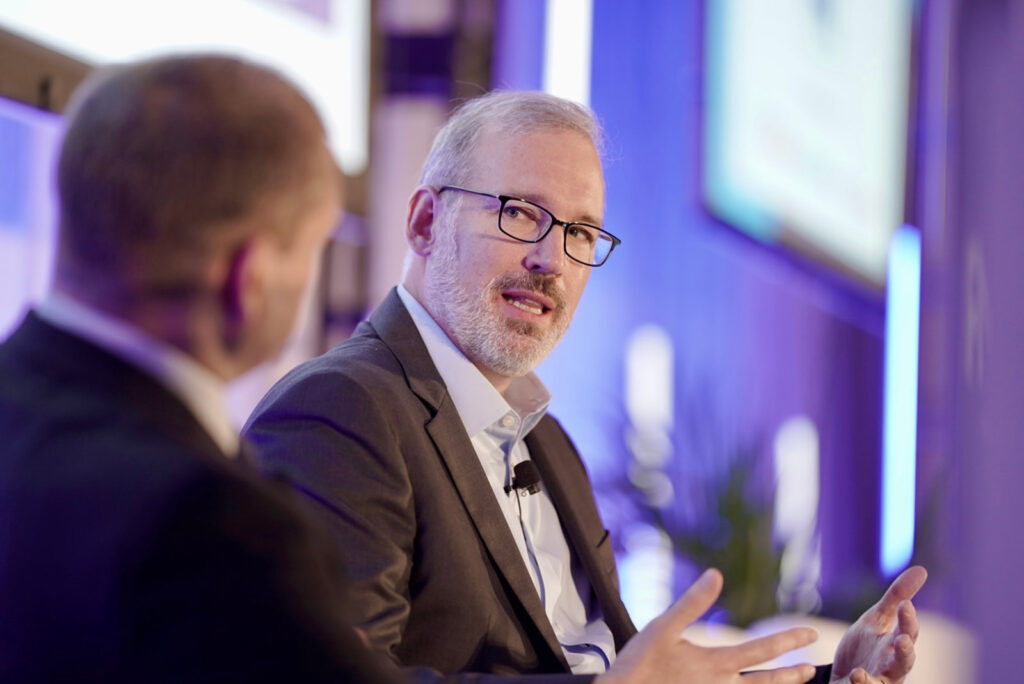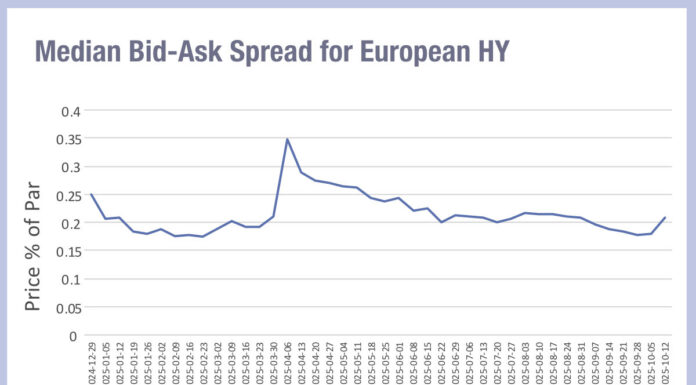Panellists at this year’s Fixed Income Leaders Summit agreed that industry collaboration, experimentation and greater competition are needed to improve liquidity across the fixed income space. However, with the disparity between firms who have the means to invest in new technology and those who don’t, the industry could be facing greater liquidity bifurcation.
There are liquidity issues across the fixed income spectrum, and each requires a different approach and solution, according to Michael O’Brien, global head of EM trading at Artisan Partners. To address these challenges, the buy side must adopt experimental initiatives being put in place, he argued.
“None of these innovations can move forward without buyside adoption; it’s a critical piece.”
The range of new options in the liquidity space is exciting, stated O’Brien. New ideas and trading protocol have been attempted before, with varying degrees of success, but the buy side is now far more engaged, he added. Firms are taking a more creative look at how they can access liquidity, he added, with the ‘all or nothing’ mindset gradually changing. While this adoption varies across different areas of fixed income, O’Brien was broadly optimistic about new ways the market is finding to access liquidity.
Have or have not

Budgets are favouring proprietary tools to allow firms to know what to trade, when, and who with, rather than focusing on flow, explained Matthew Steinaway, chief investment officer for fixed income, cash and currency at State Street Global Advisors. Technology budgets have shifted to focus more on trading functions over recent years, he added, with vendors being brought in to implement new technology offerings.
Steinaway acknowledged the advantage that SSGA has in the market, with the firm’s scale allowing it to make strategic investments and adopt the most advanced technology available. The bifurcation of liquidity that has always been present in the fixed income space due to firms’ disparate sizes is only diverging further, he noted, with those who do not have the resources potentially at a disadvantage.
Asymmetry in terms of resource availability is also an issue when it comes to portfolio trading, Steinaway said, which he described as “a bit of an exclusive club”.
The street will only conduct these trades with a select few, he explained, and smaller firms without the ability to invest in the necessary technology will find it difficult to leverage an advantage. Although the technology and talent is reasonably available, when facing off against liquidity providers it can be difficult to attract the right people.
The systemisation of trading and investing in credit and rates markets is evolving quickly, Steinaway said, and will continue to do so. Firms are now considering how to bring AI into the process, he stated, with those who are able to invest in new technology gaining a competitive advantage over others.
“Progress just accelerates from here,” he affirmed.
But he also warned that the impact on access to liquidity could create even more of a ‘have or have not’ situation for the industry.
Importance of relationships
Despite the rise of automation, panellists agreed on the importance of relationship management and voice trading across fixed income.
“When liquidity dries up you need a human on the other side,” commented Manuel Hayes, senior portfolio manager at Insight Investment, while others discussed how voice trading can minimise market impact.
“E-trading only gets you so far,” Steinaway stated, adding that “relationships remain critical”.
However, he noted that the way these relationships operate is changing, with more of a focus on partnerships and advancing both firms. This benefits large asset managers and provides a more holistic view, he said.
New trading venues
The introduction of new platforms into the market is a net positive for the markets, panellists agreed.
Ryan Raymond, head of fixed income trading at LGIM, noted that new provisions universally benefit the market, while Adam Peralta, head of US rates electronic trading at Morgan Stanley, stated that more trading platforms drive innovation and, in turn, market structure.
“More players in the space breeds competition, more technology and more options for clients and dealers,” he added.
Competition is good but companies need to go beyond just competing for market share. O’Brien emphasised the need for firms to offer something new to users, arguing that they should aim to change “just because”. There are only so many versions of RFQ that are needed, he continued; true differentiation is crucial.
Robert Allen, global head of rates products at FMX, discussed the upcoming launch of FMX’s futures exchange, stating that while securities platforms are focused on innovating, connecting market participants and boosting efficiency, the firm is aiming to establish rather than expand liquidity. Historically, competition and coexistence between platforms enhances liquidity, he noted, providing a material cross-margin benefit and improving market resiliency.
When questioned on the potential for all-to-all trading in rates, Peralta predicted that as technology evolves, adoption will increase. “It’s important for dealers and market makers to provide the full menu of tools to clients,” he shared, although O’Brien added that the buy side needs to see a behavioural shift before the tactic can really take off.
©Markets Media Europe 2024
©Markets Media Europe 2025












